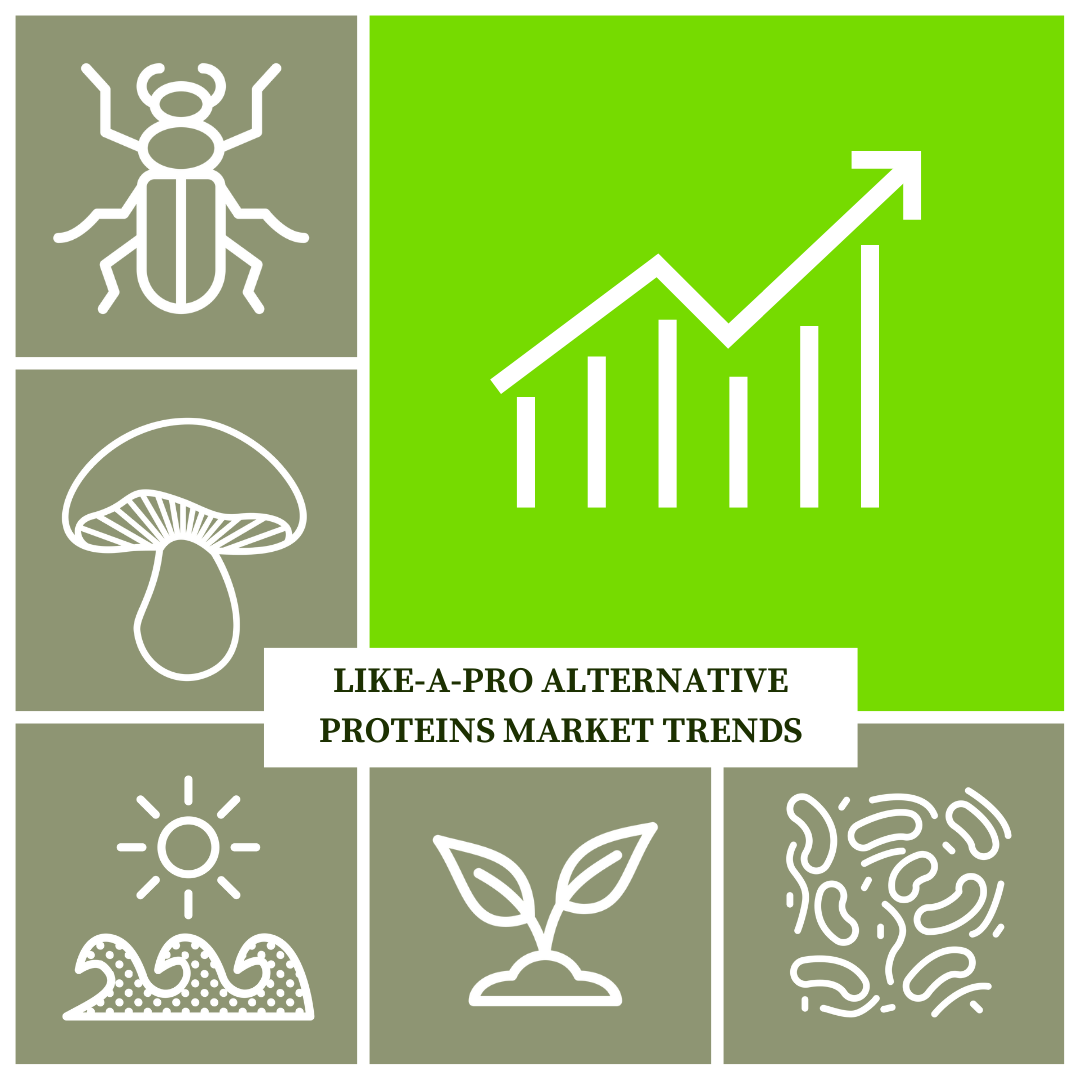
The rise of alternative protein consumption is a clear trend, as highlighted by various market analysis forecasts. Although the figures vary according to the period and the type of protein studied, there is consensus that the growth will continue. One key prediction is that by 2035, one in ten protein servings will come from alternative sources.
However, in these last years alternative proteins’ increase encountered various fluctuations. In 2022, alongside a broader global investment slowdown, the momentum in alternative protein investments weakened. When analyzed in the context of historical investment trends, this slowdown can be linked to an earlier unprecedented surge: in particular, year 2020 saw a significant 60% increase in alternative protein investments.
An emerging trend is the increased involvement of major food and meat companies in the alternative protein production and commercialisation. This strategic shift reflects a broader interest in alternative protein sources.
Let's explore the trajectory of key LIKE-A-PRO alternative protein categories:
Plant-based proteins: Their market value in 2022 was US$44,2 billion. By 2035, they are projected to maintain dominance, constituting 70% of the alternative protein market. However, their growth rate is expected to be the slowest among alternative protein types. This is partly due to market saturation, and future expectations that larger companies will acquire smaller companies to leverage their technological and manufacturing expertise.
Insect-based proteins: Despite being consumed by 2 billion people globally, the industry faces a challenge in convincing new consumers of their health benefits. With a market worth US$17.6 billion and a forecasted CAGR of 18.5% by 2032, overcoming this perception barrier is crucial for expansion.
Fermentation-based proteins: Forecasted as the fastest-growing protein type, they encompass microbes, fungi, and cultivated cells. Investments in the fermentation-based protein sector in 2022 accounted for a quarter of the total investments, with a 38% increase in the number of new investors.
Ocean-based proteins: Like-a-pro project focuses on krill as a source of ocean-based protein. The 2023 global Antarctic Krill market size was US$ 1.6 billion, with a 11.4% CAGR from 2023 to 2033.
Challenges arise in analyzing the alternative protein market. The absence of a fixed definition complicates assessments, leading to diverse products and proteins analyses. Yet, regulatory shifts, evolving consumer preferences, and rapid innovations call for continuous market analysis.
Authors: Antonella Samoggia, Giulia Rossi of University of Bologna
Sources: PWC, 2022; Future Marketing Insights, 2023; Close-Up Media Inc, 2023; Good Food Institute, 2022; IPES, 2022; Newstex, 2024; CB Insights; Bloomberg 2021; Statista 2018; Business Research Insights 2023; Blue Horizon 2022; Future Marketing Insights, 2023.